Bruce Dowbiggin
We Have Met The Goalies, And The Goalies Have Won
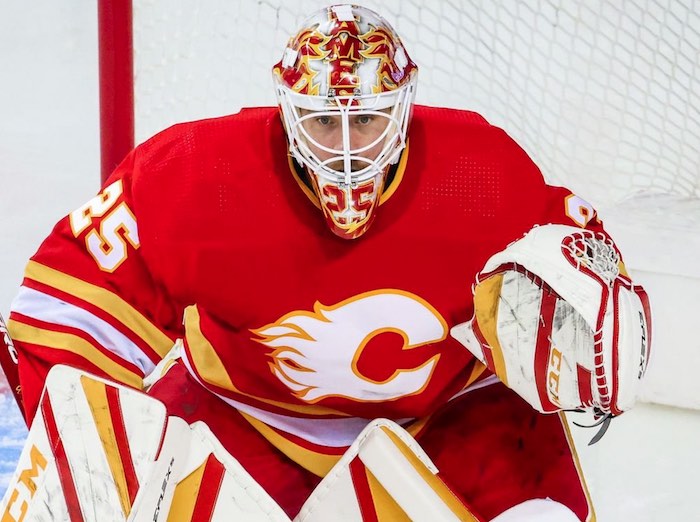
The NHL’s problem, Boston Bruins GM legend Harry Sinden told us years ago, is that there are 30 teams. But just one Stanley Cup. That makes for a lot of disappointment.
As Toronto fans can now attest, that disappointment stings worst when you have a team with a likely Hart Trophy winner and an impressive regular season. By rights a healthy Leafs squad should have disposed of the defending champions from Tampa Bay, who finished five points below them in the standings.
But the NHL is no place for favourites. Analytics have found that, generally, you’d have to play a best-of-51 series before the higher-seeded NHL team would have the advantage. (The NBA is much more favourable to the chalk.) So, given enough time Toronto would have outlasted the Lightning. It could/ would have taken till August to do so, however.
Why? Because the NHL— despite fitful attempts to redress this discrepancy— has created a Frankenstein playoff model that allows lesser teams to clog the ice, funnel shots from bad angles and get away with fouls that wouldn’t stand in the regular season. Using the rules today, a defensive-minded team can clog the front of the net, blocking as many shots as does their goalie.
In Toronto’s Game 7 loss to Tampa, the Leafs directed 57 shots at impenetrable goalie Andrei Vasilevsky. He stopped 30 of 31 that reached him. His defence almost matched him, blocking 26 shots. (Toronto blocked 13 shots while goalie Campbell stopped 20 of 22 shots that rewashed him.)
Toronto buzzed the scoring zone, dominating puck possession. They dominated faceoffs, winning 61.8 percent. In the end it meant zilch, be cause Vasilevsky was a brick wall.
It was the same for the Pacific Conference champion Calgary Flames against 23-year-old goalie Jake Oettinger and the Dallas Stars— who only snuck over .500 on the final day of the season. In Game 7 Calgary sent 129 shots toward the net, with Oettinger making 64 saves into OT. And his defence blocked 32 Calgary shots on Sunday.
On average the Flames outshot the Stars (272 shots) by over 20 shots in each of the seven games. Yet the lower-rated Dallas almost escaped with the series win, because Oettinger was otherworldly. It took a bad-angle goal from Johnny Gaudreau in OT to propel the favoured Flames to a Round 2 Battle of Alberta with Edmonton.

The NHL shows no inclination to reward hight-ranked teams, preferring to lionize the grinders and bangers by letting them hit opponents late and charging guys along the boards. If there were a goal that epitomized this credo it has to be Gm.4 of the Kings/ Oilers series when Carl Grundstrom slid on his belly into goalie Mike Smith, pushing the puck under the Oilers goalie with a two-handed shove. Ugly? Yes, but effective against the massive goalies.
Of course, what are scorers to do when faced with 6-foot-5 goalies like Smith and his towering peers blotting out the sun? The epidemic of skilled giants wearing huge equipment has led to teams not shooting till they can screen the goalie or knock in a rebound. It was something we wrote about in February of 2021 following publication of an article by Ken Dryden in The Atlantic entitled “Hockey Has a Gigantic-Goalie Problem”.
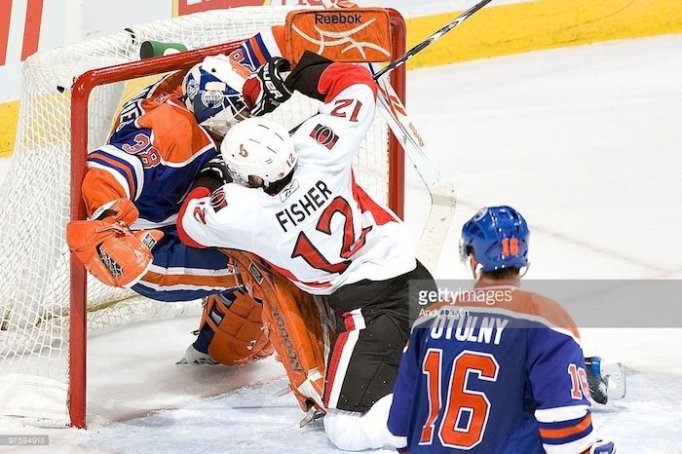
“The problem isn’t the game. The problem is the goalie, who is changing the game”, declared Dryden. “This game, one that allows for such speed and grace, one that has so much open ice, is now utterly congested… Never in hockey’s history has a tail so wagged the dog.”
Dryden reviews the evolution of the position from goalies’ bodies protruding above the cross bar to having their entire body below it. “Pads that had been made of heavy leather, deer hair, and felt were replaced with nylon, plastic, and foam rubber. These lighter materials, which made the pads less awkward to move around in and less tiring to wear, could then also be made bigger. And bigger equipment, covering a body now in position below the bar, filled even more space.”
Dryden explains how a properly positioned 6-foot-3 or taller goalie can now block all avenues for the puck— from his knees. “But really, in that equipment, with those body strategies, why get up? Why move? What better puck-blocking position could he take?”
The response from coaches and shooters? “Rush the net with multiple offensive players, multiple defensive players will go with them, multiple arms, legs, and bodies will jostle in front of the goalie, and the remaining shooters, distant from the net, will fire away hoping to thread the needle, hoping the goalie doesn’t see the needle being threaded, because if he does, he’ll stop it
It’s not a formula Dryden likes. “All the players’ amazing skills, developed in hours of practice, visualizing and dreaming in basements, on roads and local rinks, in drills with coaches and expert teachers, their minds and hands now able to move as fast as their feet, to find and use all the open ice that is there. But with so little open ice where open ice matters, for what?”
He contrasts how basketball solved its size problem: introducing the three-point line to open up scoring in what was becoming a stalemate beneath the hoop. “If a big guy can’t pass and shoot, there’s no place for him. With big guys dispersed and away from the basket, little guys now even get rebounds. All 10 players are involved. All 10 players can have a role. All 10 players, on the best teams, and on even better teams in the future, need to have a role to win. This NBA game, played on a much smaller surface than a hockey rink, is now far more open, much less congested.”
Dryden’s solution is a reluctant one. “The clever cat-and-mouse game between goalies and shooters has run its constructive course. The goalies, by winning, have changed the game.” So the net must be made bigger. “Maybe only six inches or a foot wider, maybe only six inches higher. And only for those in junior and college leagues and above.”
Whether the NHL can see beyond its cherished myths of grinders and role players to admit it has a problem is the question. A question that, as long as Gary Bettman is commissioner, will never be answered.
Bruce Dowbiggin @dowbboy is the editor of Not The Public Broadcaster (http://www.notthepublicbroadcaster.com). The best-selling author was nominated for the BBN Business Book award of 2020 for Personal Account with Tony Comper. A two-time winner of the Gemini Award as Canada’s top television sports broadcaster, he’s also a regular contributor to Sirius XM Canada Talks Ch. 167. His new book with his son Evan Inexact Science: The Six Most Compelling Draft Years In NHL History is now available on http://brucedowbigginbooks.ca/book-personalaccount.aspx
Bruce Dowbiggin
Wayne Gretzky’s Terrible, Awful Week.. And Soccer/ Football.
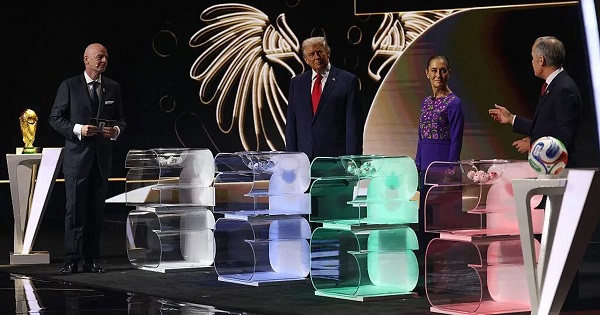
Inquiring minds want to know: Why did FIFA (Federation of International Fraud Artists) award American president Donald Trump a new “Peace Prize” at the Washington D.C. draw for the June/ July tournament? The usual suspects are paralyzed with rage. Everyone else is laughing at the kabuki theatre stunt.
The short answer is that if you were FIFA and you were receiving a reported billion or more dollars from the U.S. and the Canadian/ Mexican cities hosting the 48-team tournament you’d give the host more than a bottle of wine and flowers as a thank-you. Thus the ugly statue and the Boy Scout medal. The obsequious awarding of the prize and match medal were proportionate to the greed of FIFA in extorting the cash.
(America’s fainting goat media immediately complained about unearned awards for little virtue, forgetting as usual that the Nobel folks gave Barack Obama a Peace Prize after nine months in the White House for simply being a black man.)
Trump getting a peace award from FIFA, the most corrupt sports body in the sports world, is mint, however. You can’t write this stuff. (They should give it to him on a speed boat heading across the Caribbean.) The Donald then playfully suggested that Americans leave the name football to the soccer folks because, you know… feet and a ball. More outrage from NFL fans.
So what was the gift for the two Canadian cities hosting games who have also coughed up plenty? Toronto says its estimated budget is $380 million for six games/ B.C. tax payers are obliged to cough up an estimated $580 million for Vancouver’s five games). For cities with, how shall we say, bigger fish to fry.
Sadly all they got was a little farce in which a delighted PM Mark Carney was allowed to Canada as the first ball to start the picking, evidently unaware that all the balls he had to select from also said Canada. Carney’s joy was tempered when he saw Mexican president Claudia Sheinbaum draw a ball that said “Mexico” while Trump— in on the fix— got one entitled “United States”.

In a final attempt to curry favour with the fleeced nations FIFA boss Gianni Infantino gathered the world leaders for a painful onstage selfie, marking the first time Trump and Sheinbaum had ever met in the (orangey) flesh. Call it National Lampoon’s Soccer Vacation.
Having exhausted itself with the peace prize falderol FIFA evidently forgot to put any more thought into the rest of the 55-minute run-up to the draw. While soccer/ footie fans around the world ground their teeth in impatience the organizers presented a combination Eurovision/ People’s choice Awards ordeal of failed cues, untranslated interviews (the Spanish translator showed up about 30 minutes late) and pregnant pauses.
Host Heidi Klum’s stunning gold dress nearly made up for her wooden repartee with comedian Kevin Hart (“not sure why I’m here”) and co-host Rio Ferdinand, former star English defender who, alas, never won the WC. But that was all an appetizer for the real low point, the introduction of global brand stars to pick the draw. NFL legend Tom Brady, NBA legend Shaquille O’Neal and NHL… er, player Wayne Gretzky.
Their task, hectored by the hosts, was to draw a ball, unscrew the thing, withdraw a nation’s name and so on. While there may have been some tension in the audience there was no appreciation of that on the screen as more clunking dialogue and curious pronunciations (Ferdinand kept referring to Group “Haitch”) landed dead on the floor.
The nadir of the ceremony—indeed of his career— was Gretzky’s contribution. Brady and O’Neal had managed to survive their task of unscrewing the ball and pronouncing a name, but Gretzky was brought low by the stage business of the balls and the nations he was forced to announce.

The clearly flustered Gretz (he insisted he’d practiced all morning) wrestled manfully with the balls. Finally the producers went with a long shot of him fumbling in the dark. Then he topped that. Gretzy apparently thinks there are countries called “North Mack-a-donia” and “Cur-ack-ow.” Other stabs at geography were almost as tortured.
Bitter Canadians could put up with him sucking up to Trump (he was mentioned as being in the crowd at the DC Xmas tree lighting) but failing geography is unforgivable. The week that started with Gretzky in a photo golfing at POTUS’s Jupiter, Florida, golf course was ending with him pummelled for his abuse of nations with different-sounding names. The Wayne Gretzky Center For Kids Who Want To Talk Good.
The moral: Never send a centre to do a netminder’s job. Makes you understand why Bobby Orr has laid low since his Trump endorsement came out.
With that bracing date with immortality disposed of the draw proceeded. We had been pounded for an hour about how great the tournament was, and finally footy fans got what they wanted. As a host Canada got a bye into the field. Their reward is playing the tenacious Swiss and, gulp, probably Italy, which is forced to qualify after playing with their food for too long. (Insert your Stanley Tucci joke.)
If not Italy then one of Wales, Bosnia and Herzegovina or Northern Ireland. Oh, right Qatar is in there too as fodder. Been nice knowing you, Canada. The Americans somehow drew a creme puff quartet of Australia, Paraguay and Slovakia, Kosovo, Turkey or Romania. Money can’t buy you love, but it can get you a warm hug from FIFA.
In the end it’ll be one of Brazil, Argentina, Germany or France for the final in the NJ Meadowlands on July 19. Maybe they’ll have a spelling bee at halftime. Or maybe they’ll bring back Trump for the final game to give him another peace prize. Just don’t ask Gretzky to announce Lothar Matthaus, Bruno Guimaräes or Gabriel Magalhäes.
Bruce Dowbiggin @dowbboy is the editor of Not The Public Broadcaster A two-time winner of the Gemini Award as Canada’s top television sports broadcaster, his new book Deal With It: The Trades That Stunned The NHL And Changed hockey is now available on Amazon. Inexact Science: The Six Most Compelling Draft Years In NHL History, his previous book with his son Evan, was voted the seventh-best professional hockey book of all time by bookauthority.org . His 2004 book Money Players was voted sixth best on the same list, and is available via brucedowbigginbooks.ca.
Bruce Dowbiggin
Carney Hears A Who: Here Comes The Grinch

It’s a big day for the Who’s of Whoville. Mayor Augustus Maywho is now polling at 62 percent approval. Cindy Lou Who and Martha May Whovier can barely contain their trans-loving heart that finally the Pierre The Grinch is done.
Okay it’s not WhoVille. It’s Canada and it is leader Mark Carney who’s zooming in the polls against Pierre Poilievre. But it might as well be the real nation that Carney commands today. As 2025 comes to a conclusion Donald Trump seems the least of Whoville’s perils. For example:
The NDP government in B.C. has now declared that future legislation must be interpreted through the lens of the United Nations Declaration on the Rights of Indigenous Peoples. According to Chief Bent Knee (David Eby) this means that the province cannot act independently of the progressive diktats of Sudan, Nepal, Moldova and other international titans. Having been informed of Canada’s “genocidal” behaviour by Trudeau in the Rez Graves pantomime, the UN folk will no doubt look on Canadians as worthy of punishment.
The UNDRIP menace has been around since the days when Skippy Trudeau was wielding the mace in Parliament. On June 20, 2021 the federal government passed UNDRIP into law by a vote of 210 to 118. (The Liberals, NDP and Bloc all voted in favour.) The only party that opposed it were the Conservatives. In defence of those hapless boobs none of them voting yes ever expected a province to align itself with such legislation. That’s the Canadian way. Act on conscience. Retract on self preservation.

But on the heels of Eby’s unopposed capitulation to B.C.’s many “peoples” in recent land settlements, ones that threaten the legal right to properties of home owners, the wholesale framework for governing the province now will be determined by appeal to the UN.
The Carney crew — who act as though Canada’s indigenous communities are now equal partners in Confederation— assure Canadians that judicious lawyering by government savants has everything under control, but anyone trusting the Liberals after the past decade is in need of counselling.
The B.C. conundrum plays into another of the challenges (read: disasters) faced in B.C. by the Elbows Up brigade. Namely the much-heralded memorandum of understanding on energy policy between the feds and Alberta. Canadians were assured by Ottawa that this federal government sees pipelines as a priority, and getting Alberta’s product to tidewater as an urgent infrastructure need. Carney described the MOU as if it were a love-letter to the restless West. How is he going to get pipelines through to the B.C. coast when Eby and the indigenous said it was a no-go? Trust us, said Carney.
Before you could say Wetaskiwin dark clouds gathered on the deal. Smith took it in the ear from Alberta separatists for compromising anything to the feds. Carney, meanwhile, ran into the predictable roadblock from B.C. Eby talked of maybe allowing pipelines in the future, but the ban on shipping off the province’s shoreline was verboten.
To test the resilience of the MOU the federal Conservatives (remember them?) put forward a motion to build the pipeline from Alberta to the B.C. coast. Even though the motion used the same language of the MOU between Danielle Smith and Mark Carney, the Liberals and their hand maidens defeated the motion. Carney himself abstained because, hey look at that shiny object.
Immediately the Trudeaupian Deflection Shield was employed. Here’s Liberal Indigenous Service minister and proud Cree operative Mandy Gull Masty “Today’s motion that’s being put on the floor is not a no vote for the MOU. It’s a no vote against the Conservatives playing games and creating optics and wasting parliamentary time when they should be voting on things that are way more important.”
Robert Fife, the highly rated G&M scribbler who just won some big award, led the media pack, “Conservatives persist with cute legislative tricks, while the government tries to run a country.” Run a country? Into the ground?
Let’s not forget the $1.5 billion bloviators at CBC. They, too, say the vote is a big loss for the Tories. “It risks putting them offside, what is a very top priority and frankly, was considered a big win for Alberta Premier Danielle Smith.’” said Janyce McGregor. Here’s Martin Patriquin on one of the Ceeb’s endless panels. “It’s embarrassing, man. I don’t see any sort of political advantage to what happened today.”
Embarrassing? The Libs have committed to re-building gas pipelines in Ukraine, even as they stall on developing pipelines in Canada. Luckily CBC washrooms have no mirrors. And there’s always Donald Trump to deflect from the pantomimes of Canadians Laurentian debating club.
Here, CTV hair-and-teeth Scott Reid is nursing a Reuters poll that has Trump’s approval at historic lows of 36 percent. Reuters is a firm that predicted Kamala winning the presidency. Until she didn’t on Nov.4. Meanwhile Rasmussen, which correctly had Trump ahead the entire campaign, has his current approval at 44 percent while the RCP average is 43.9.
But corrupt data to make Trump seem odious is no sin in WhoVille Ottawa. Keep feeding the Karens bad data. At least Canadians have their beloved healthcare to fall back on. Or maybe their beloved MAID. A Saskatchewan woman suffering from parathyroid disease has revealed that she is considering assisted suicide, because she cannot get the surgery she needs.
“Jolene Van Alstine, from Saskatchewan, has extreme bone pain, nausea and vomiting. She requires surgery to remove a remaining parathyroid, but no surgeons in the province are able to perform the operation. In order to be referred to another province for the operation, Van Alstine must first be seen by an endocrinologist, yet no Saskatchewan endocrinologists are currently accepting new patients.
The pain has become so unbearable that she has been approved for Canada’s euthanasia and assisted suicide program, with the ending of her life scheduled to take place on 7 January 2026.”
Well. Happy New Year, Canada. May no one offer you MAID in the next twelve months.
Bruce Dowbiggin @dowbboy is the editor of Not The Public Broadcaster A two-time winner of the Gemini Award as Canada’s top television sports broadcaster, his new book Deal With It: The Trades That Stunned The NHL And Changed hockey is now available on Amazon. Inexact Science: The Six Most Compelling Draft Years In NHL History, his previous book with his son Evan, was voted the seventh-best professional hockey book of all time by bookauthority.org . His 2004 book Money Players was voted sixth best on the same list, and is available via brucedowbigginbooks.ca.
-

 espionage2 days ago
espionage2 days agoWestern Campuses Help Build China’s Digital Dragnet With U.S. Tax Funds, Study Warns
-
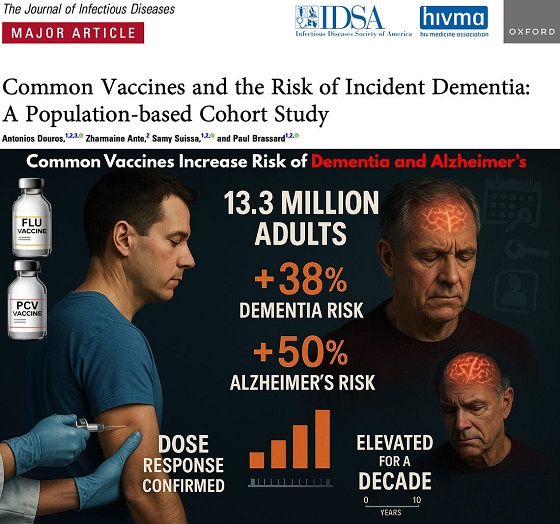
 Focal Points1 day ago
Focal Points1 day agoCommon Vaccines Linked to 38-50% Increased Risk of Dementia and Alzheimer’s
-
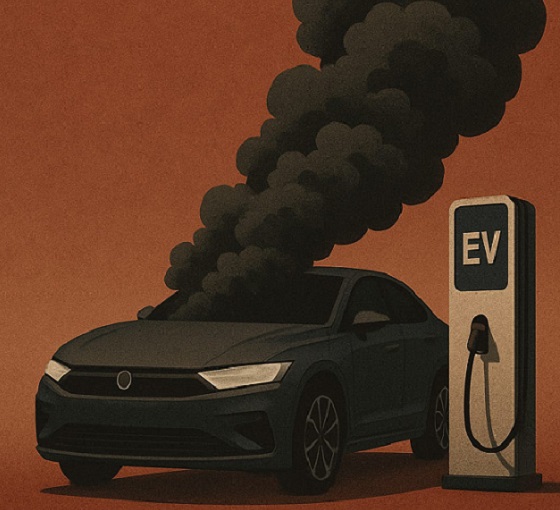
 Automotive21 hours ago
Automotive21 hours agoThe $50 Billion Question: EVs Never Delivered What Ottawa Promised
-
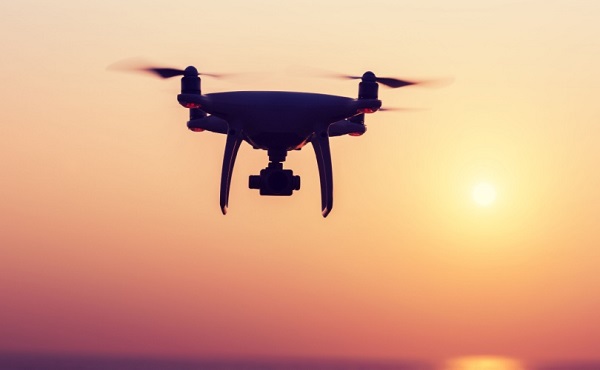
 Business2 days ago
Business2 days agoCanada invests $34 million in Chinese drones now considered to be ‘high security risks’
-
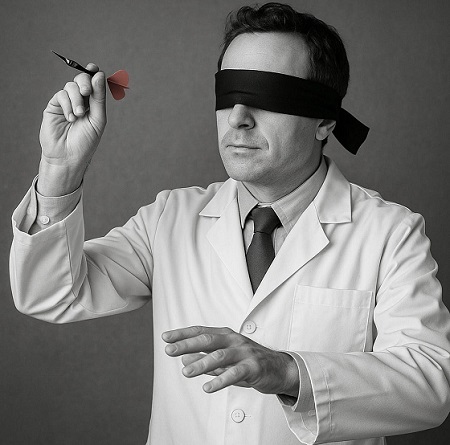
 Health1 day ago
Health1 day agoThe Data That Doesn’t Exist
-
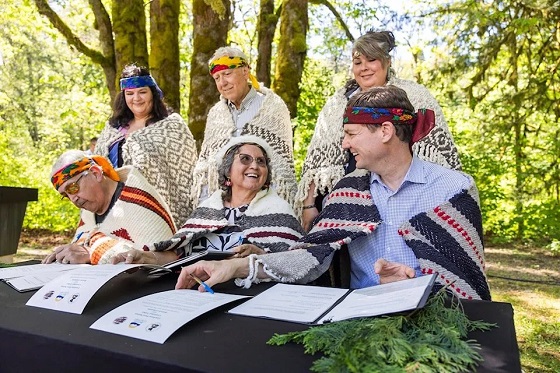
 Business15 hours ago
Business15 hours agoStorm clouds of uncertainty as BC courts deal another blow to industry and investment
-

 Economy2 days ago
Economy2 days agoAffordable housing out of reach everywhere in Canada
-
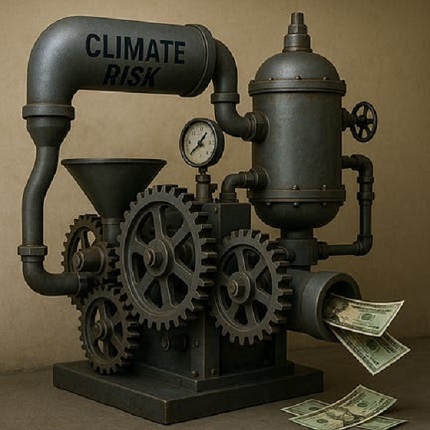
 Business1 day ago
Business1 day agoThe Climate-Risk Industrial Complex and the Manufactured Insurance Crisis




